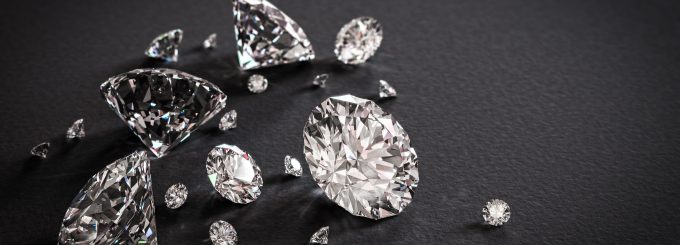Why Portuguese Cuts are Used in Jewelry

The Portuguese cut is widely regarded by many jewelers as being one of the most challenging. The process is so complex and time-consuming that it can quickly test the patience of inexperienced gem cutters, but the spectacular results are well worth the effort.
What is a Portuguese Cut?
This cut originates from either Portugal or Brazil and utilizes several facet tiers, that when done correctly will produce a stunning light display. While the conventional roundish brilliant cut uses fifty seven facets, the Portuguese cut may use up to 161. The cuts are also deeper with lots of triangular and rhomboidal facet rows. As a consequence, the Portuguese cut generates extremely high scintillation (which is the light pattern flash visible whenever a stone is transported).
The Portuguese cut is also distinctive for its smaller table (upper horizontal facet) that is encircled by rhomboidal rows in order to produce its crown, which increases overall brilliance. It is for this reason that the cut is often applied to bigger colored stones, since the cutting style is ideal for concealing smaller inclusions while enriching the gem with additional sparkle and color.
There are also circumstances where the amount of rhomboidal rows may be modified based on the rough depth. However, because of the facets which are tightly packed within the pavilion and crown, it is clear to most jewelers that a Portuguese cut is much more effective in bigger stones rather than smaller ones.
Portuguese Cut Characteristics
As you’ve probably guessed from the description above, the Portuguese cut is not for amateur jewelers. It is one of the most advanced cutting techniques and requires tremendous skill, patience, and experience. Therefore, you won’t see it often and any jewelry which uses it will carry a much higher cost than usual. However, for those that want a gem that stands out from the crowd, there is no better choice.
This gem-cutting method needs lots of facets and substantial labor must be used to produce them. Additionally, the roughness needs a depth that is much deeper than normal. In the past, the main goal for jewelers was implementing weight retention, but the method used to create the Portuguese cut indicates that it probably emerged in the modern era. The amount of precision needed for this cut is exceptionally high. Every facet must be perfectly aligned with neighboring facets, to the extent that even variations as low as 0.1mm are not acceptable.
On average, it takes a gem cutter between thirteen and fourteen hours to produce a Portuguese cut. This is the average time needed to transform the diamond from a roughened to a polished state. The pavilion-to-crown ratio might change depending on the gem but generally, this cut will always be taller than conventional round brilliants. This cut also utilizes a table which is quite generous and is compatible with shapes that range from rounds to pears and ovals. Because of the many facet rows it uses and associated angles, it is usually not compatible with settings that are pre-made since the gem is too deep.


